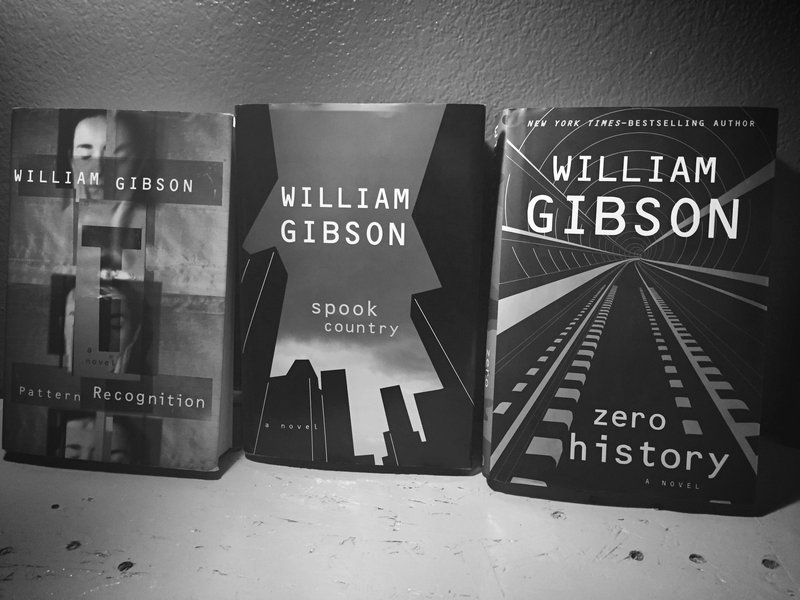Pattern Recognition / Spook Country / Zero History
Posted March 23, 2023 by Paul Graham Raven
Quite early on in Spook Country, the middle book of William Gibson’s Bigend trilogy, a secondary character—a curator of geolocative art—notes that “cyberspace has everted”.
That eversion might itself be seen as an inversion of the “shared kill-file” which supposedly enables the Kowloon Walled City cybercommunity of Gibson’s previous trilogy, a placeless online place which he imagined into being while much of what we (erroneously, but persistently) call “the internet” was still a great deal cruder than that.
Spook Country was published in 2007, when the idea of ordinary people having access to GPS-enabled technologies was still moderately shock-of-the-new. (It also posits comfortable and reliable VR headsets, but that seems to be something that comes back around every decade-and-change or so, despite the persistent lack of a mass-audience use-case.) The novel, and the rest of the trilogy, wrestles with what was at that time the imminent spatialisation of “cyberspace”, which now feels like a fait accompli long since passed. Also in the frame are the relationships between marketing and (artificial) scarcity, origin stories, military history, economics, precarity, hideous wealth, art, the collector’s impulse, deep states and global logistics.
At the time, it felt like a stretch to claim that a novel whose plot depended on the movement of a mysterious shipping container would have much to say about life in the subsequent decade or so, though a number of people claimed it anyway. That claim, and the novel, and the trilogy, hold up alarmingly well.
Part ten in the series Hip Deep in the Thick Present
This text is featured as part of FoAM's Anarchive
Created: 20 Feb 2023 / Updated: 23 Mar 2023











